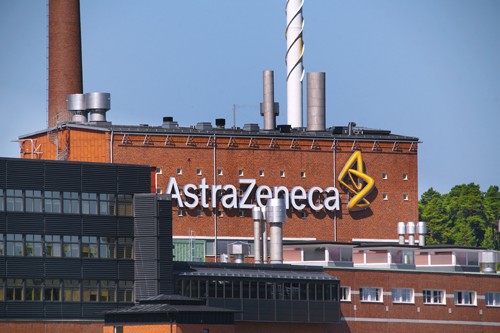
Just a few weeks after reporting positive phase III results, AstraZeneca has filed Tagrisso with the EMA as a first-line treatment for patients with EGFR-positive non-small cell lung cancer (NSCLC), and had the application accepted.
The submission is based on the results of the FLAURA trial, in which Tagrisso (osimertinib) boosted progression-free survival in these patients to 18.9 months from 10.2 months with current first-line EGFR-targeting drugs.
AZ describes Tagrisso as a third-generation EGFR inhibitor, with advantages over first-line agents – its own Iressa (gefitinib) product and Roche’s Tarceva (erlotinib) – not only in efficacy but also in terms of its safety profile.
In FLAURA, the median duration of response was two-fold higher with Tagrisso at 17.2 months compared to 8.5 months with Iressa or Tarceva, and the overall response rate was 80% and 76%, respectively.
Overall survival also seemed to favour AZ’s drug, although this was not statistically significant at the interim analysis, and the incidence of grade 3 or higher toxicities was lower for Tagrisso (34%) than standard first-line drugs (45%).
Approval as a first-line treatment is not a guarantee that Tagrisso will replace the first-generation EGFR inhibitors in treatment-naïve NSCLC patients, and this could hinge on whether it ultimately shows an overall survival advantage, according to some analysts.
It would almost certainly unlock additional sales momentum however, for a product that is a key to AZ’s ambitions in cancer along with its PD-L1 inhibitor Imfinzi (durvalumab), which is also making waves in NSCLC with the results of the PACIFIC trial.
Tagrisso has been growing fast in its approved indication as a second-line therapy for EGFR-positive NSCLC after patients develop resistance (the T790M mutation) and progress on Iressa or Tarceva, making sales of $651m in the first nine months of the year, overtaking Iressa which brought in $398m in the same period.
Some oncologists have suggested that it should be used second-line as this gives two lines of therapy – and first-line agents have not been shown to work in patients who develop resistance to it. Conversely, others argue that this denies patients receiving the best therapeutic option straight away, particularly as a sizeable proportion of first-line patients – up to one half – don’t develop T790M mutations.
AZ also maintains that Tagrisso’s ability to penetrate the central nervous system (CNS) is another benefit over the older drugs, as approximately 25% of patients with EGFR-positive NSCLC have brain metastases at diagnosis, increasing to approximately 40% within two years of diagnosis.




